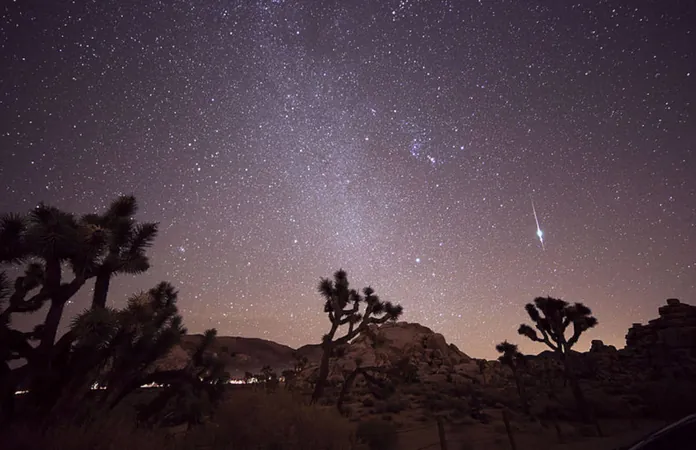
Taurid Meteor Shower: A Dazzling Display or a Hidden Danger?
2024-11-17
Author: Ming
Taurid Meteor Shower: A Dazzling Display or a Hidden Danger?
As the Taurid meteor shower lights up the night skies across the globe, stargazers are in for a visual treat—expect to see shooting stars, and if you’re lucky, some spectacular fireballs, which are notably the brightest meteors one can witness. With the full moon diminishing after November 15, the visibility of these stellar phenomena will improve significantly, especially during the moments right before moonrise.
However, amidst the beauty of shooting stars lies a serious question: could there be larger, more hazardous objects within the Taurid meteor streams? Scientists have long suspected the presence of substantial chunks of celestial debris, possibly the size of boulders or even mountains. This raises the alarming possibility of a collision with Earth. Could previous cataclysmic events in our planet's history be linked to these very meteor streams?
The Taurid meteor shower originates from comet Encke— a modest-sized comet measuring just over 3 miles (6 kilometers) in diameter, which cycles between Earth’s orbit every 3.3 years. As Encke traverses the inner solar system, it sheds dust and larger debris that, upon entering our atmosphere at high speeds, creates those mesmerizing 'shooting stars.' However, it’s not just cosmic dust that poses a spectacle; larger fragments can lead to bright fireballs, and on occasion, explosions upon entry.
The theory known as “coherent catastrophism” posits that comet Encke itself is a remnant of a much larger comet that fragmented into smaller pieces. This theory suggests that alongside the dust, larger chunks might exist, posing a potential risk to Earth during future passes. However, mainstream scientists have voiced skepticism; they argue that the catastrophic predictions associated with this theory lack substantial observational evidence, particularly for high-density clusters of large objects.
Despite the lack of definitive proof, those on the fringes of scientific consensus have echoed claims of a global catastrophic event occurring roughly 12,900 years ago— linking it to massive firestorms and rapid climate shifts that contributed to the extinction of large animals like woolly mammoths, as well as the disappearance of prehistoric American cultures.
Nevertheless, not all wild theories are entirely unfounded. Historical events, such as the Tunguska incident in 1908, hint at the potential dangers of the Taurid stream. An airburst believed to have been caused by an object roughly 160 feet (50 meters) in diameter occurred in Siberia, resulting in massive devastation comparable to a nuclear explosion. The intriguing part? The trajectory of this event aligns with that of potential Taurid meteors, and supercomputer simulations indicate a match with the observable damage left in Tunguska's aftermath.
Looking ahead, predictions indicate that the Taurid meteor swarm will reach its closest point to Earth in 2032 and 2036, presenting an opportune moment for researchers to study the potential hazards of these celestial objects for a second time. While current scientific consensus leans toward the idea that large, destructive objects from the Taurids are not prevalent, planetary defenders maintain that every possible threat must be investigated. After all, even a Tunguska-sized impact could result in catastrophic consequences, potentially obliterating cities and claiming countless lives.
In summary, while the Taurid meteor shower offers a dazzling display of celestial beauty, it simultaneously serves as a stark reminder of the potential threats lurking in our solar neighborhood. The burning question remains: just how much should we be concerned about these meteoric giants as we gaze at the shimmering night sky?

 Brasil (PT)
Brasil (PT)
 Canada (EN)
Canada (EN)
 Chile (ES)
Chile (ES)
 España (ES)
España (ES)
 France (FR)
France (FR)
 Hong Kong (EN)
Hong Kong (EN)
 Italia (IT)
Italia (IT)
 日本 (JA)
日本 (JA)
 Magyarország (HU)
Magyarország (HU)
 Norge (NO)
Norge (NO)
 Polska (PL)
Polska (PL)
 Schweiz (DE)
Schweiz (DE)
 Singapore (EN)
Singapore (EN)
 Sverige (SV)
Sverige (SV)
 Suomi (FI)
Suomi (FI)
 Türkiye (TR)
Türkiye (TR)